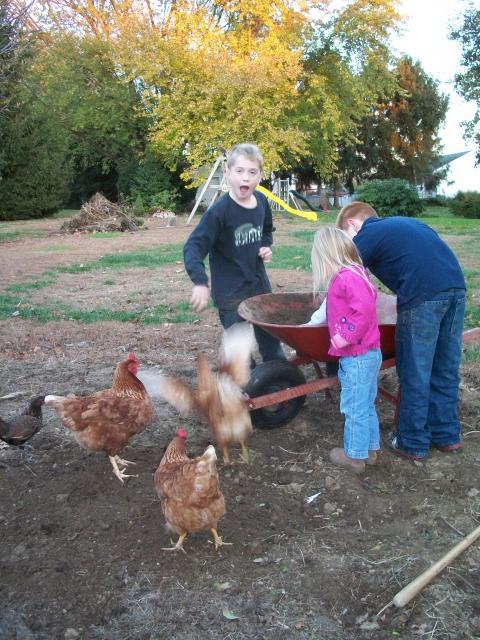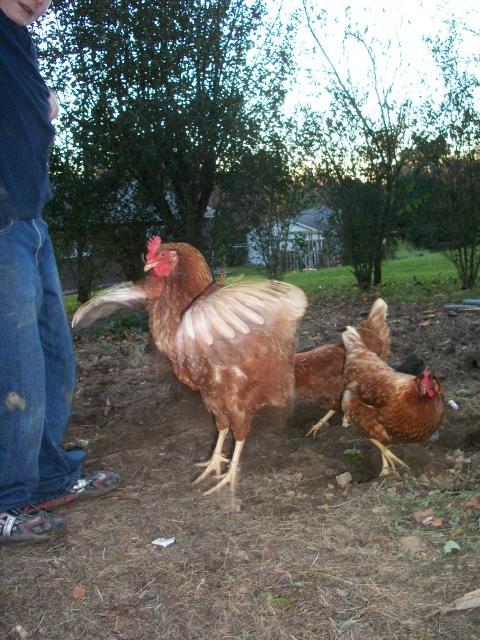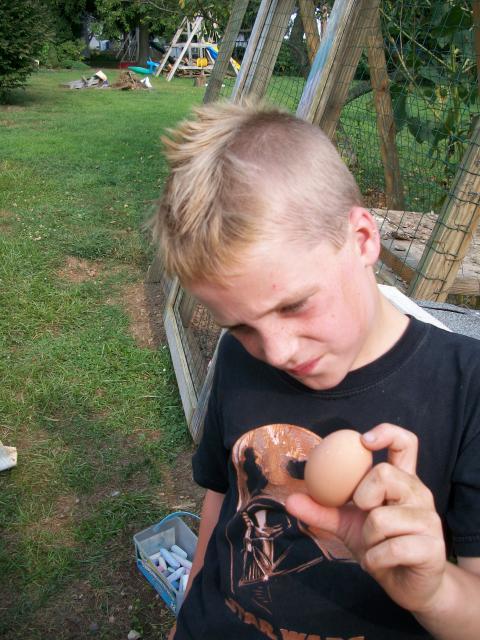I have two Production Reds that I bought from a local farmer. Both were hatched back in the spring of this year.
Those two girls are the BEST egg layers I have ever had!
One of the girls, Brownie, laid an egg 29 out of the last 31 days. Her "smallest" egg was 2 and 3/8 ounces (which classifies as an "extra large" egg), but almost all of her eggs were 2 and 1/2 ounces (which classifies as a "jumbo" egg). She did not lay even one egg this past month that was less than an "extra large."
The other girl, Cinnamon, lays a slightly smaller and slightly lighter shade of chocolate colored egg. Her eggs range in weight from 2 1/8 ounces to 2 3/8 ounces, but most of them are 2 1/4 ounces. In other words, most of her eggs are officially "extra large" eggs. Once in a great while, she'll lay a "jumbo" egg, but not too often.
These girls are about 8 months old now, so they are at their peak egg laying age.
One thing I have noticed is that these two lay so often and such big eggs that they MUST have extra nutrients -- especially calcium -- or else their eggs begin to suffer. I have access to raw milk, so I give them raw milk to drink several mornings each week. This gives them extra sugar, protein and most importantly -- calcium. I am not sure how beneficial store bought, pasturized milk would be for a bird. But RAW milk is IDEAL for a laying hen, and their regular access to raw milk is probably why I get such great results from these birds.
I also feed them boiled egg at least once a week for the same reason -- to make sure they get plenty of healthy nutrients in them. Most people don't have access to raw milk, but they DO have access to eggs -- so boiled eggs will provide the same nutrient boost. If you grind up the shells, you can even feed the shells back to the hens. Lots of calcium is in those ground up egg shells.
Plain, micro-biotic filled yogurt can be used in lieu of raw milk to do the same job that the raw milk and/or boiled egg do.
Also, please note that I have supplemental lighting in the henhouse. This time of the year, hens begin to slow down in their egg production -- doesn't matter what variety -- if they do not have supplemental light in their housing units. My hens get 14 hours of light a day, plus a healthy diet, and they respond by producing what is probably the maximum number and size eggs for their variety.
On top of all of that -- my Production Reds are the sweetest little hens! They don't care to be held, but they interact really well with other chickens and with people, they eat treats out of my hand, and they handle confinement well.
I HIGHLY recommend Production Reds!



 Can't go wrong with a few RIRs.
Can't go wrong with a few RIRs.






